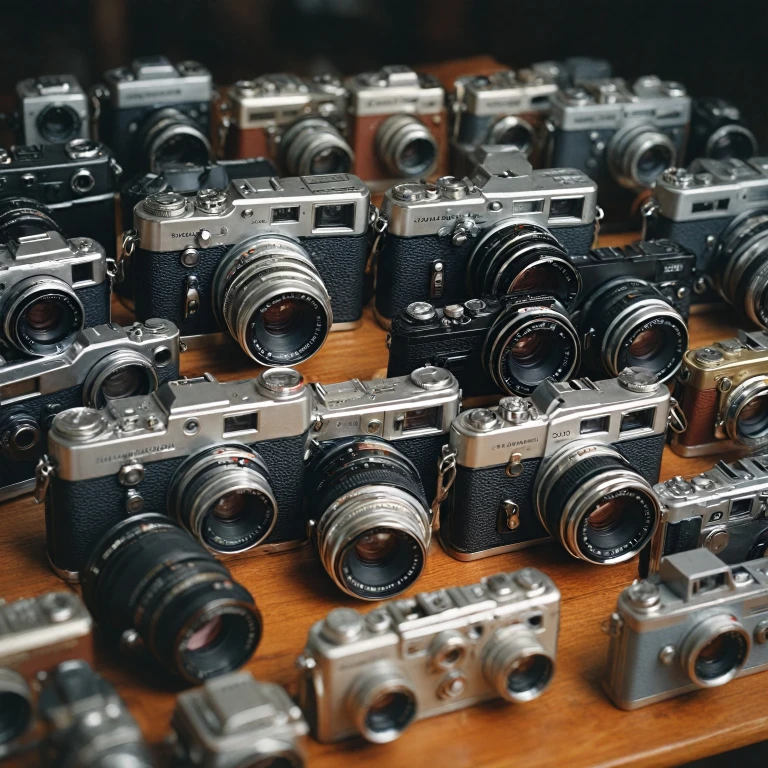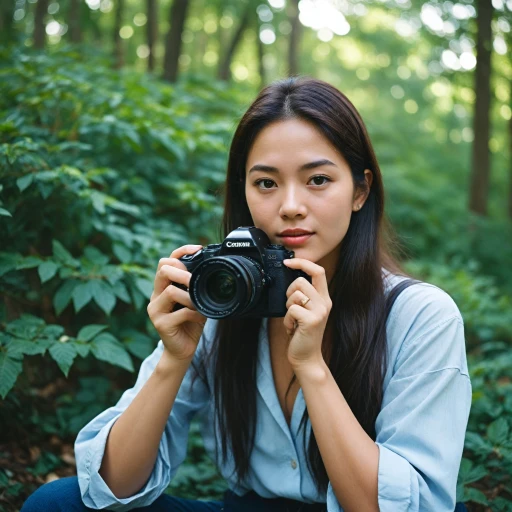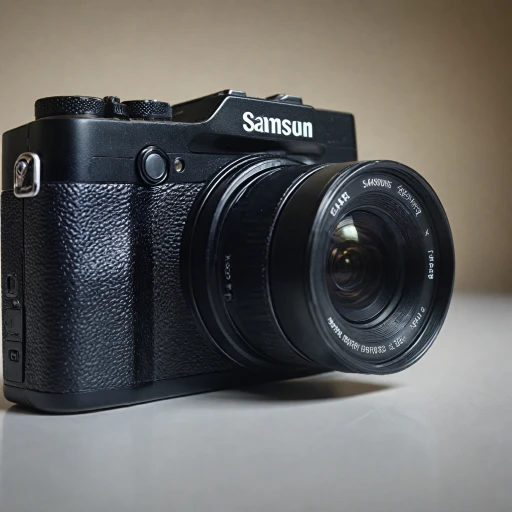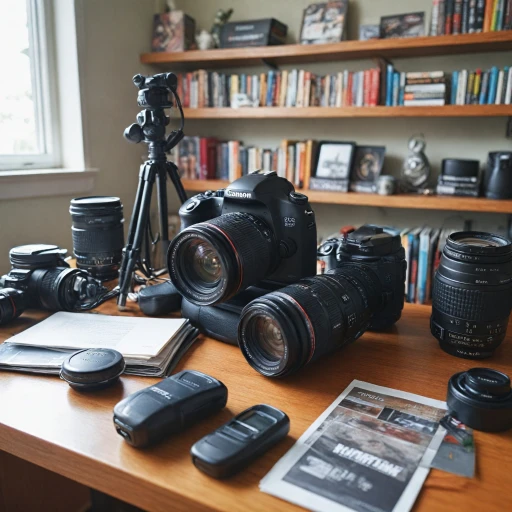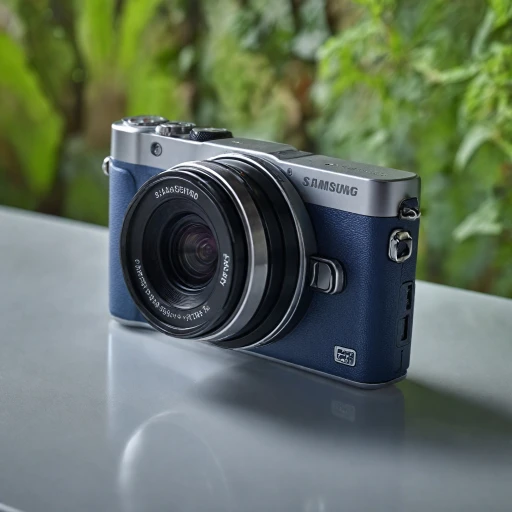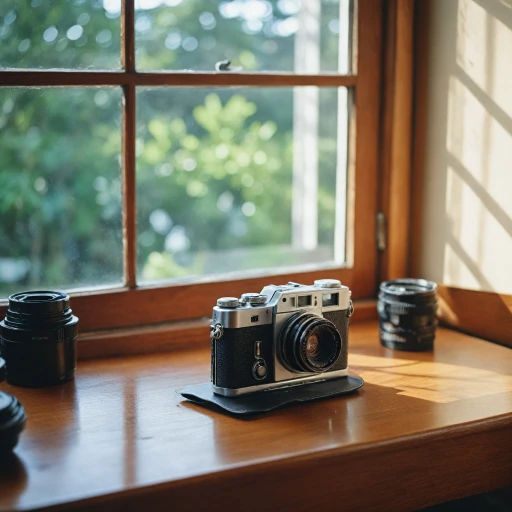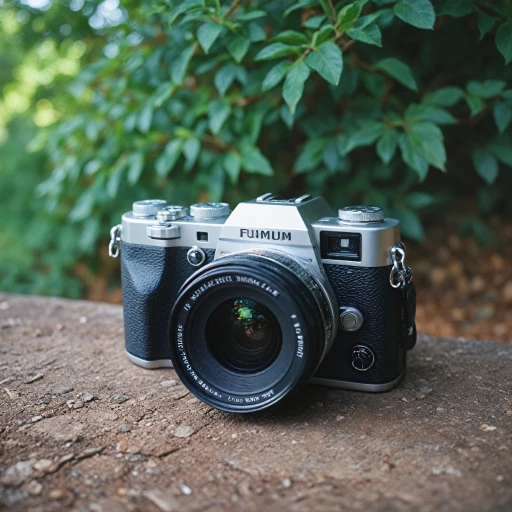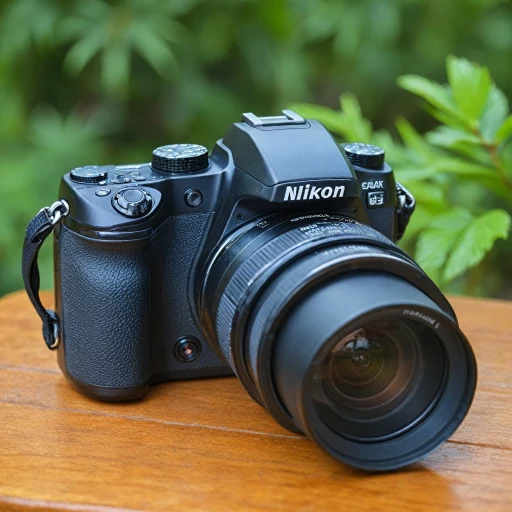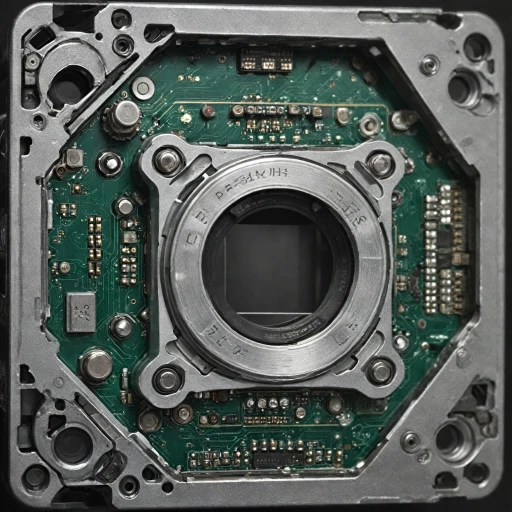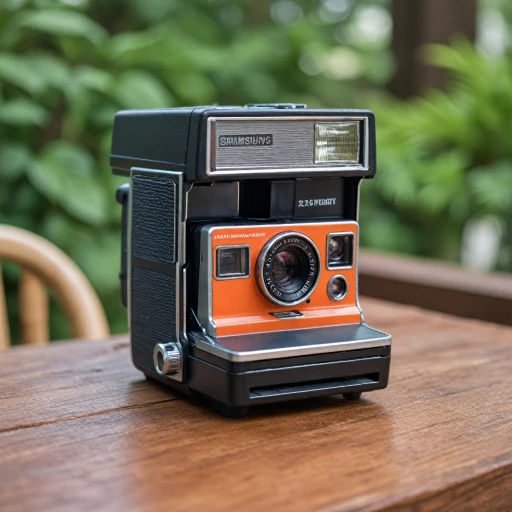
Understanding Digital Film Cameras
Delving into the World of Digital Film Cameras
Digital film cameras are an intriguing blend of traditional film aesthetics and modern digital technology. These cameras offer a unique photography experience by combining the tactile feel of film cameras with the convenience and versatility of digital systems. As you explore this fascinating realm, you'll encounter a variety of options from renowned brands like Nikon, Canon, and Fujifilm, each offering distinct features and capabilities.
Understanding the Core Components
At the heart of a digital film camera lies its sensor, which plays a crucial role in capturing images. Unlike traditional film cameras that rely on film rolls, digital film cameras use sensors to convert light into digital data. This allows photographers to instantly review their shots, making it easier to adjust settings and capture the perfect moment. The choice between a full frame or half frame sensor can significantly impact the quality and style of your photography.
Exploring Camera Bodies and Lenses
The camera body is another essential component, influencing the overall feel and functionality of the device. Brands like Leica and Sigma offer camera bodies that cater to different photography styles, from point-and-shoot simplicity to the advanced capabilities of mirrorless digital systems. Additionally, the lens you choose, whether a Nikon lens or a Canon EOS, can greatly affect the outcome of your photos. The right lens can enhance your ability to capture stunning images, whether you're shooting landscapes or portraits.
The Role of Instant and Mirrorless Cameras
Instant cameras, such as those offered by Kodak, provide a nostalgic touch by delivering physical prints on the spot. Meanwhile, mirrorless cameras have gained popularity for their compact design and advanced features, offering a modern alternative to traditional DSLR systems. These options cater to different preferences and needs, making it essential to consider what suits your style best.
For those interested in the timeless charm of vintage cameras, digital film cameras offer a bridge between the past and present, allowing photographers to enjoy the best of both worlds. As you continue to explore the key features and benefits of digital film cameras, you'll gain a deeper understanding of what makes them a compelling choice for photography enthusiasts.
Key Features of Digital Film Cameras
Essential Characteristics to Look Out For
When venturing into the realm of digital film cameras, there are several key features to take into account. Each characteristic plays a significant role in defining the user experience and the quality of the images or videos captured. Here’s what you should know:- Sensor Size: The sensor is the core component that captures the image. Depending on whether you choose a full frame or half frame option, it will affect the quality and detail of the photos. Larger sensors typically provide better performance in lower light conditions.
- Resolution and Megapixels: While more megapixels don't inherently mean better quality, they do offer higher resolution images which can be advantageous for prints and detailed photos.
- Lens Compatibility: Depending on the camera system - be it Nikon, Canon, or Leica - available lens options might vary. The versatility offered by a wide range of Nikon lenses or Canon EOS alternatives can significantly enhance your photography.
- Camera Body Build: Consider the durability of the camera body. Cameras such as those from Sigma ensure a robust structure, while others in sleek black finishes may prioritize aesthetics or compactness.
- Price Range: The price can vary substantially across different brands and models. From budget-friendly options to premium picks like those from Leica, it's crucial to set a budget that captures your desired features without breaking the bank.
- Autofocus System: An effective autofocus system, such as those found in mirrorless digital cameras and point shoot models, can greatly benefit those capturing fast-paced subjects or shooting in dynamic environments.
- Film Simulation Modes: Some digital models, like those from Fujifilm, offer film simulation options that replicate the look of classic film stocks like Kodak Ektar. This can be a distinctive feature for photographers who enjoy vintage aesthetic within a digital framework.
- Instant Film Capabilities: For those who cherish the tangible experience, instant film cameras offer a blend of digital and analog worlds. With options available to print out photos instantaneously, brands like Kodak have made a resurgence in this niche market.
Benefits of Using Digital Film Cameras
Exploring the World of Digital Film Cameras: Unveiling the Advantages
Photography enthusiasts and professionals often find digital film cameras combining the best of both worlds: the aesthetic of traditional film with the ease of digital technology. Among these benefits, several standout aspects highlight why many are gravitating towards these cameras.- Unique Image Quality: Digital film cameras, such as those offered by brands like Nikon and Canon, are renowned for their ability to produce rich, warm tones that replicate the nostalgia of shooting on film. The versatile sensor options—ranging from point-and-shoot to full-frame—enable photographers to capture the hallmark dynamic range of film with the modern convenience of digital imaging technology.
- Enhanced Flexibility: With systems like that of Leica and Fujifilm, photographers can switch effortlessly between different types of camera bodies—from mirrorless digital designs to the classic film bodies—empowering them to adapt to various photography styles seamlessly. This adaptability is particularly beneficial when transitioning between environments or projects that demand different approaches.
- Cost-Effectiveness: Although the initial purchase price can be steep, especially with high-end models like the Panasonic Lumix or Sigma's offerings, many users find long-term savings through the reduced need for purchasing film and developing prints. Additionally, the digital format allows for instant review and editing, minimizing waste and optimizing time management.
- Embracing the Digital Era: With the advent of mirrorless cameras and the integration of automatic settings found in models like the Canon EOS series, users can experience the ease and immediacy of digital photography. These features make capturing stunning images more accessible to beginners and hobbyists who may not fully comprehend the complexities of manual film photography.
Challenges in Digital Film Camera Usage
Overcoming Hurdles in Digital Film Camera Usage
Navigating the world of digital film cameras can be as challenging as it is exciting, especially when transitioning from traditional film cameras to their digital counterparts. While digital film cameras offer a plethora of advantages, there are specific hurdles that photographers may face. Firstly, the expenses associated with digital cameras can be quite steep. From the camera body to lenses and associated accessories, costs can quickly accumulate. Brands like Nikon, Canon, and Fujifilm offer a range of options, but the price of a high-quality lens or a mirrorless camera system might be a barrier for some enthusiasts. Next, understanding the technical aspects of digital cameras, such as sensor types and their impact on image quality, is essential. Whether you're working with a full-frame sensor or a half-frame, each has its pros and cons, influencing the final outcome of your photography. Moreover, when comparing traditional film to digital, some photographers miss the tactile experience that film cameras, such as Kodak models, offer. The nostalgia of film stocks like Kodak Ektar is something digital cameras cannot replicate. Digital cameras also come with the complexity of software systems, such as autofocus and image stabilization, which requires regular updates and maintenance. Each brand, whether it’s Nikon, Canon, or Leica, offers unique system features that require user familiarization. Additionally, the vast variety of lens offerings can be daunting. Choosing between a Nikon lens, a Canon EOS variety, or third-party options like Sigma requires an understanding of compatibility and suitability for specific photography needs. Finally, the rapidly evolving technology in digital film cameras necessitates continuous learning. With the market seeing constant releases and sales promotions, keeping up to date is crucial. By acknowledging and addressing these challenges, photographers can better navigate the dynamic landscape of digital cameras. Developing a clear understanding of one’s needs versus available features and budgeting accordingly can help in overcoming these obstacles effectively.Choosing the Right Digital Film Camera
Finding Your Ideal Digital Film Camera
Choosing the right digital film camera involves balancing personal preferences, budget, and specific needs. Whether you're drawn to the retro vibe of film cameras or eager to explore the precision of advanced digital features, knowing what to look for can greatly influence your selection. Here are some considerations to guide your decision-making process:- Budget Constraints: Start by identifying your price range. Digital cameras vary widely in cost, from affordable point-and-shoot models to high-end digital bodies from brands like Leica, Panasonic Lumix, Nikon, and Canon.
- Intended Use: Think about what type of photography you'll primarily be doing. A mirrorless camera or a full frame digital camera might be ideal for high-resolution photography, whereas an instant camera could be perfect for more spontaneous shoots.
- Brand and Model: Different brands offer unique features. Nikon lenses and the Canon EOS system are renowned for their quality. Fujifilm offers some intriguing options for film enthusiasts.
- Type of Camera: Decide between a full digital film camera, half frame, or even a hybrid system. Each option has its merits and challenges as discussed earlier.
- Lens Compatibility: Consider your lens needs. For those interested in expanding their lens collection, ensure the chosen camera body is compatible with additional lenses, such as those from Sigma or Canon.
- Sensor Quality: The sensor size impacts your photography. A larger sensor, like full frame, can provide better image clarity and performance in low light.
- Ease of Use: If you’re a beginner, a user-friendly model might be more beneficial, whereas seasoned photographers might prefer a camera with more advanced settings.
- Special Features: Look for specific elements that enhance the photography experience, such as instant printing on cameras like the Kodak Ektar, and special film effects which can be enticing for creative expression.
Future Trends in Digital Film Camera Technology
Evolution and Innovations Transforming Digital Film Cameras
The digital film camera landscape is ripe for innovation, influenced by ongoing technological advancements. As digital cameras become more sophisticated and prevalent, the blend of traditional film aesthetics with modern digital conveniences continues to capture the interest of both professional and amateur photographers.- Sensor Technology: Critical in both digital and film cameras, the sensor technology in brands like Nikon, Canon, and Fujifilm is constantly advancing. Full frame and half frame sensors are now optimized for better quality, sensitivity, and dynamic range, ensuring images have both depth and clarity.
- Lenses: The development of compatible lenses remains a focus, with companies offering a range of options from a Nikon lens to a lens from Canon's EOS line. This flexibility allows photographers to harness different styles of photography, be it point shoot or more complex, layered compositions.
- Camera Systems: The rise of mirrorless cameras signifies a shift in user priorities, focusing on compactness without compromising on image quality. These systems, whether they belong to the Panasonic Lumix or Sigma family, represent the future of digital film cameras, offering portability and advanced features in a sleek package.
- Versatility in Formats: Recent innovations cater to the evolving demands of photography. Instant photography, popularized by brands like Kodak, with models like the Kodak Ektar, enables quick image capture, which has become quite attractive in the digital age.
- Pricing Dynamics: Given the expanding functionality of digital cameras, prices have also varied widely. While high-end setups, such as those from Leica or a mirrorless digital camera system, offer incredible quality, they can be expensive. Nonetheless, competitive pricing strategies and the availability of sales have made advanced photography equipment more accessible to a broader audience.
